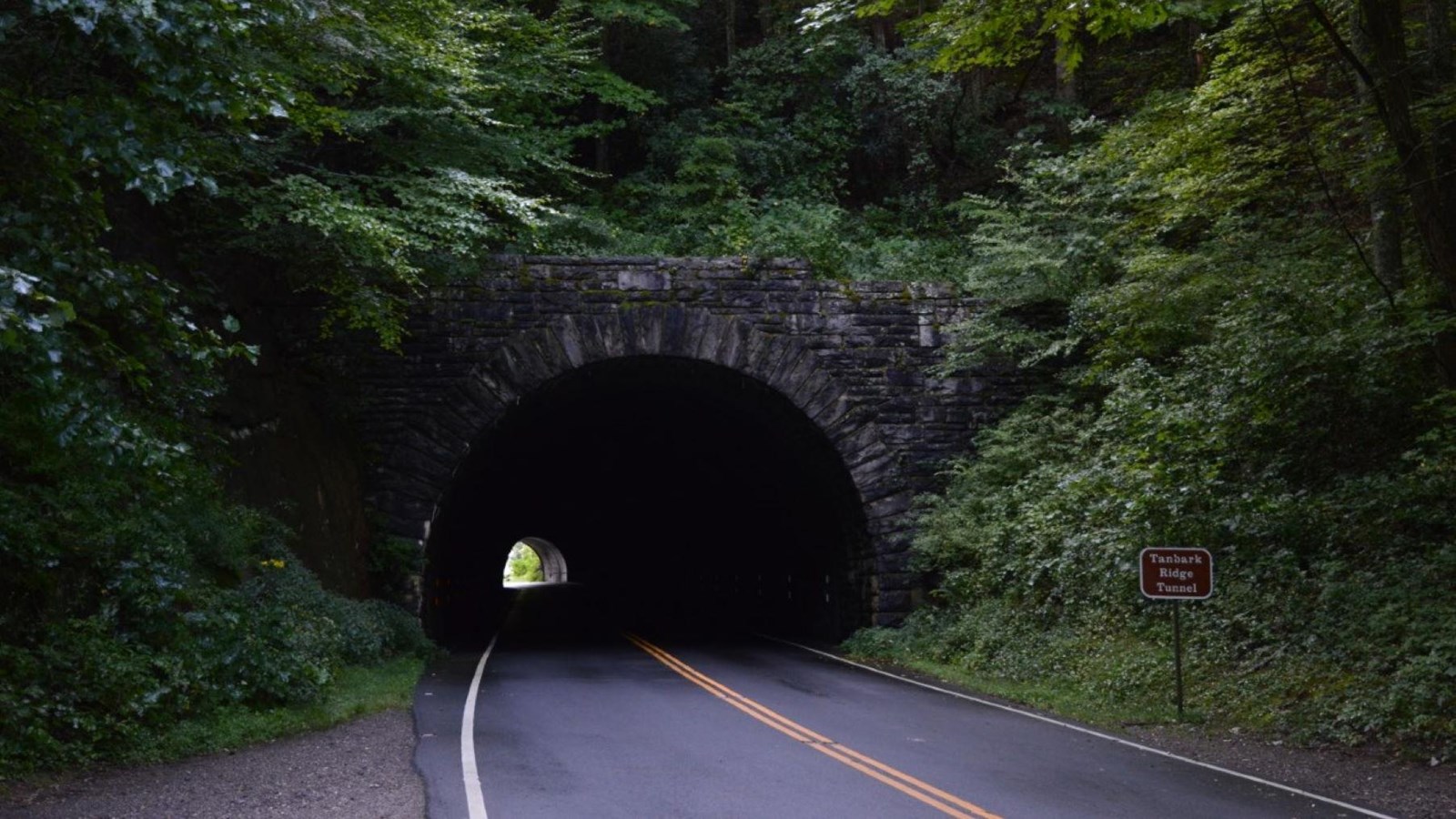Last updated: November 2, 2024
Place
Tanbark Ridge Tunnel

NPS Photo / Laura White
Parking - Auto, Scenic View/Photo Spot, Trailhead
Located approximately fifteen miles north of Asheville, the Tanbark Ridge Tunnel allows visitors an opportunity to safely park their vehicle and view or photograph one of the Blue Ridge Parkway's iconic tunnels.
Limited gravel roadside parking is available on the south side of the tunnel. There is a slight drop-off from the asphalt roadway to the gravel--pull off the road slowly. Trails lead up to the historic Rattlesnake Lodge site (the relics of a summer home of a local Asheville physician that dates to the early 1900’s) and ultimately to the Mountains-to-Sea Trail.
The word "tanbark” in the name of this tunnel refers to tannins, organic compounds in the bark of oaks and hemlocks. Traditionally, the bark of these common mountain trees was bruised and broken to extract the tannins, which was used to tan hides for leather-making. The forest in this area is still predominantly mature oak and hemlock.
Although “social” trails appear to lead to the top of the tunnel, they are not Park Service authorized hiking trails and are steep, slippery, and dangerous. Traffic is busy on this section of the Parkway. Drivers from the south are approaching from a blind curve, drivers from the north are coming out of the tunnel. This makes anyone standing in the road very difficult to see. For your safety and the safety of others, please stay out of the road and do not walk inside the tunnel. Visitors are encouraged to enjoy the beauty and craftsmanship of the tunnel from the safety of the roadside.
Tunnels along the Parkway were created to reduce the impacts open blasting would have had on the mountainsides. After initial construction of the Parkway in 1935, tunnel building took place in the late 1940’s – 1950’s. A concrete lining was added to the interiors to prevent problems with groundwater dripping, freezing, and roadways icing inside the tunnels. The semi-circular arches on the entrances of the tunnels were added by Spanish and Italian stonemasons in the 1950’s and 60’s. The stone is all local, from less than 50 miles away from each build location.
There are 26 tunnels constructed along the entire 469 miles of the Blue Ridge Parkway. One is in the state of Virginia and 25 are in North Carolina. They range in length from 150 feet (Rough Ridge Tunnel) to 1,434 feet (Pine Mountain Tunnel).
Check the conditions of the area before you visit.
Success
Thank you. Your feedback has been received.
Error
alert message

